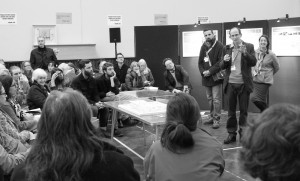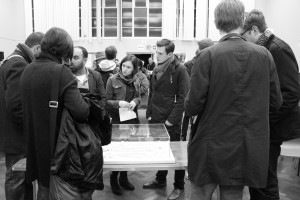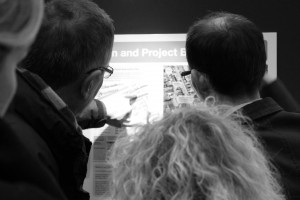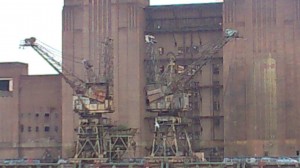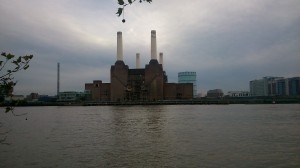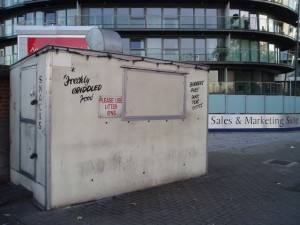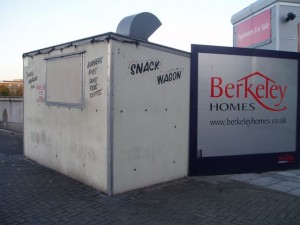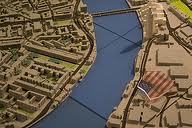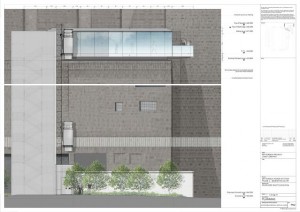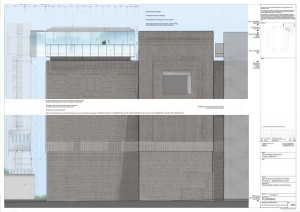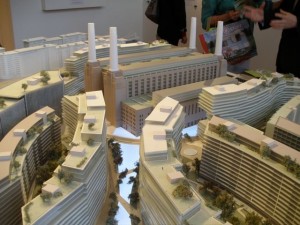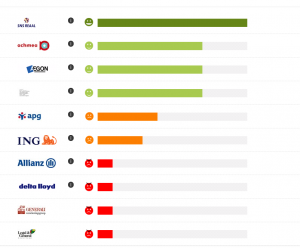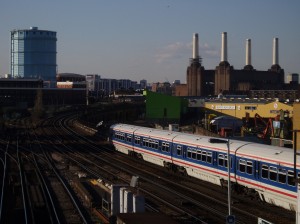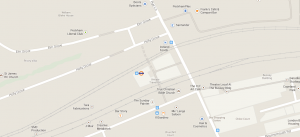 The Telegraph’s Alex Proud recently proclaimed that Peckham was the latest victim of ‘Shoreditchification‘ – a culture sweeping run-down areas of London, in which entrepreneurial ‘hipsters’ move in and create a hub of creativity for a while. Thus attracting like-minded hipsters to the area, raising rent prices until the original settlers can no longer afford to live there and the place becomes commercialised by Starbucks and inner-city bankers. However, as Aleks Eror rightfully asks in his defending article, “What are lowly paid creative types supposed to do?”.
The Telegraph’s Alex Proud recently proclaimed that Peckham was the latest victim of ‘Shoreditchification‘ – a culture sweeping run-down areas of London, in which entrepreneurial ‘hipsters’ move in and create a hub of creativity for a while. Thus attracting like-minded hipsters to the area, raising rent prices until the original settlers can no longer afford to live there and the place becomes commercialised by Starbucks and inner-city bankers. However, as Aleks Eror rightfully asks in his defending article, “What are lowly paid creative types supposed to do?”.
No doubt Peckham, in recent years, has seen wave of creative activity, or gentrification as others like to call it, with the Peckham Liberal Club, the Bussey Building, and the multi-storey car park (of Frank’s Cafe fame, as reviewed by Time Out over the summer) all putting Peckham on the map. In addition to these, the area surrounding Rye Lane station, particularly within the Arches Studios and within the 1930’s arcade building on Blenheim Grove, have become home to some of the most attractive qualities for creative-types. To name a few, The Sunday Painter gallery situated just above the newly opened Peckham Refreshment Rooms, then Bar Story and Innovation Interiors.
Ongoing efforts to restore the station to its former glory, which have been largely campaigned for by The Peckham Society, Rye Lane & Station Action Group and Peckham Vision have culminated in a series of unfortunate events.
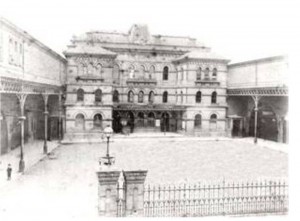 Rye Lane station, seen here circa 1880, boasted a grand first class waiting room at the top of the building, now affectionately dubbed The Old Waiting Room, and a large square before it reaching out to Rye Lane itself. Local architect, Benedict O’Looney, took on the restoration project several years ago, and along with Peckham Vision, has been campaigning for the space to become a community-led enterprise ever since.
Rye Lane station, seen here circa 1880, boasted a grand first class waiting room at the top of the building, now affectionately dubbed The Old Waiting Room, and a large square before it reaching out to Rye Lane itself. Local architect, Benedict O’Looney, took on the restoration project several years ago, and along with Peckham Vision, has been campaigning for the space to become a community-led enterprise ever since.
However, in light of Peckham’s recent successes on the ‘hipster’ scene, it has come to the attention of Network Rail that there is money to be made here. Network Rail own the station, the land beneath the forecourt that reaches out to Rye Lane and around to Blenheim Grove, and all of the arches down to Bellenden Road (as can be seen in the image bellow). The whole area is known as The Gateway.
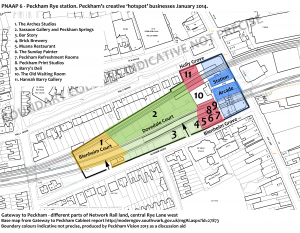 Initial plans to restore the square before the station, creating a community space with growing commuter traffic better managed, were welcomed by local residents. It was proposed that businesses affected by the redevelopment project, including Jenny’s Cafe, the fruit and vegetable stall on the corner, DDJ Jerk Centre and the new £400,000 Southwark Council-subsidised Cycle Hub, would all be relocated and uninhibited. Yet, as is always the case, the promise of commercial turn-overs has led to a ‘preferred option plan’ by Network Rail, which is so horrible it is making the creative community quake in their Dr. Martens.
Initial plans to restore the square before the station, creating a community space with growing commuter traffic better managed, were welcomed by local residents. It was proposed that businesses affected by the redevelopment project, including Jenny’s Cafe, the fruit and vegetable stall on the corner, DDJ Jerk Centre and the new £400,000 Southwark Council-subsidised Cycle Hub, would all be relocated and uninhibited. Yet, as is always the case, the promise of commercial turn-overs has led to a ‘preferred option plan’ by Network Rail, which is so horrible it is making the creative community quake in their Dr. Martens.
The 1930’s arcade in front of the station is to be ripped out, and replaced by two, towering seven-storey residential buildings on either side of the proposed square, consisting of 40 units. We are reassured that the ground floor units will be use-classed as A3’s: restaurants and cafes, which rings bells of London Bridge’s torrent of card shops and Paul’s.
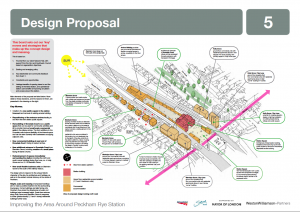 As a result of the business loss – around 2000 sq ft of it – Network Rail then proposes gutting out the arches of all current, long-standing, independent businesses and replacing them with individual, lonely retail shells all along residential Blenheim Grove. Undoubtedly, the rent for these glorious new-builds will be too expensive for anyone other than Paperchase to afford. In an extraordinary coincidence, Network Rail have yet to put these illustrative plans on their website, but have still issued a weeks feedback period for all constructive comments, to be made by Sunday 26th January. The extent of the plans can only feasibly be found on the project blog, ‘Improving the Area Around Peckham Rye Station‘.
As a result of the business loss – around 2000 sq ft of it – Network Rail then proposes gutting out the arches of all current, long-standing, independent businesses and replacing them with individual, lonely retail shells all along residential Blenheim Grove. Undoubtedly, the rent for these glorious new-builds will be too expensive for anyone other than Paperchase to afford. In an extraordinary coincidence, Network Rail have yet to put these illustrative plans on their website, but have still issued a weeks feedback period for all constructive comments, to be made by Sunday 26th January. The extent of the plans can only feasibly be found on the project blog, ‘Improving the Area Around Peckham Rye Station‘.
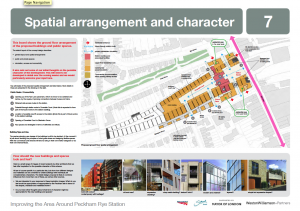 Southwark Council have also issued a 33 page PDF entitled ‘Peckham Rye Station: the case for change‘, which details the many “cultural” and financial benefits of the redevelopment. Below are a few artist impressions of what the square will look like. Clearly the artist was in no two minds about the fate of Peckham Rye either; note the inclusion of Wagamama and Natwest.
Southwark Council have also issued a 33 page PDF entitled ‘Peckham Rye Station: the case for change‘, which details the many “cultural” and financial benefits of the redevelopment. Below are a few artist impressions of what the square will look like. Clearly the artist was in no two minds about the fate of Peckham Rye either; note the inclusion of Wagamama and Natwest.
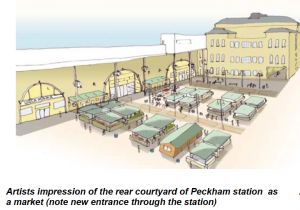
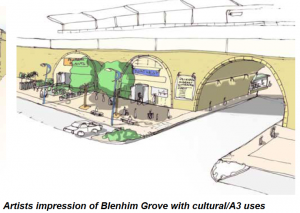 On Saturday 18th January, a drop-in exhibition was held in Rye Lane Baptist Chapel, in which discussion with the architects was encouraged during a Q&A session. The following blog post will report on the events that ensued.
On Saturday 18th January, a drop-in exhibition was held in Rye Lane Baptist Chapel, in which discussion with the architects was encouraged during a Q&A session. The following blog post will report on the events that ensued.
See Peckham for more blogs and information.
Or visit PlanA, our general blog on urbanism, planning and architecture.
Spectacle homepage
Like Spectacle Documentaries on Facebook
Follow SpectacleMedia on Twitter

